Laundry basket looking full? Set yourself up for success by knowing the importance of sorting clothes. Learn how to correctly separate light, dark, white, and patterned clothing, and sort your laundry by fabric type! Knowing how to sort laundry, and separate laundry not only prevents accidents, but also aids cleaning, preserves colors and brightness, reduces drying time, and diminishes the spread of lint and fuzz. Starting out with properly sorted fabrics, and using the right garment-preserving wash methods will help to achieve your best laundry yet, and keep your favorite pieces around for longer. To separate your clothes for washing, follow these steps: The basic rules are to sort clothes by color and fabric type. Sort clothes by color to avoid bleeding and dye transfers. Sort clothes by fabric type to avoid damage in the wash and use the correct wash cycle.How To Sort Laundry
STEP 1: Check Label Before washing any item, checking labels is a must for sorting clothes. There, you'll find its fabric content, such as 100% cotton or 65% polyester or 35% cotton. Before separating by color, it’s actually most important to determine fabric content. This will dictate your washing methods, including water temperature, washing cycle, and drying method.
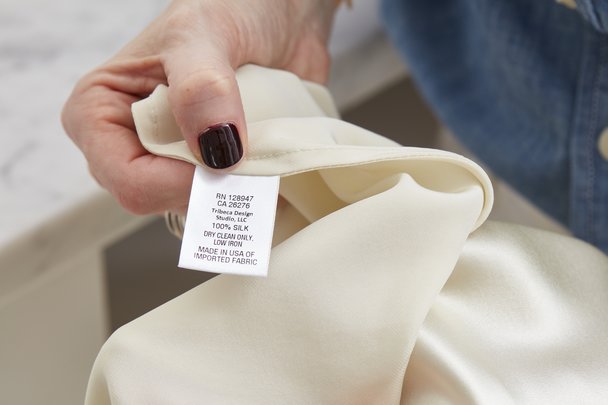
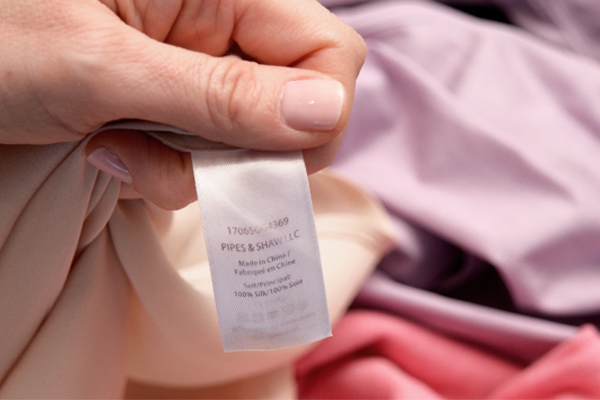
STEP 2: Sorting Blended Fabrics Our rule of thumb for washing a blend is to follow the instructions for the fabric with the highest percentage. For example, if the label indicates that a shirt contains a blend of 70% cotton and 30% polyester, follow our washing instructions for cotton. If the item contains any amount of silk, follow the washing instructions for silk even if the silk percentage is small. The same rule applies to all woolens and cashmere. If an item contains both silk and wool, follow the washing instructions for wool. These delicate fabrics are too sensitive for regular washing methods and must be laundered separately to keep them looking new. Most “dry clean” tagged items—about 90%—can be safely laundered at home using the right fabric-specific detergent formulas that cleanse and protect delicate natural and synthetic fibers as opposed to stripping them. Watch out for fabrics with heavy embellishment, leather patches, over-dyed patterns, and items tagged “do not wash” however. Some fabrics are not designed to withstand water exposure and should be professionally cleaned.
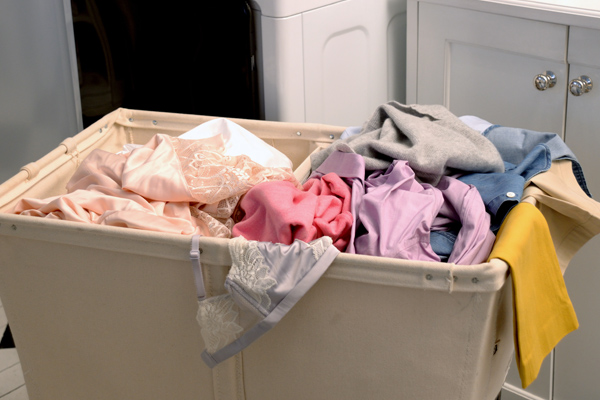
STEP 3: Create Piles To tackle a supersized laundry pile, the next step is to separate your items into groups. You can actually pre-sort items to make life easier by using a handy sorting hamper, with compartments that allow you to separate items before wash day rolls around.
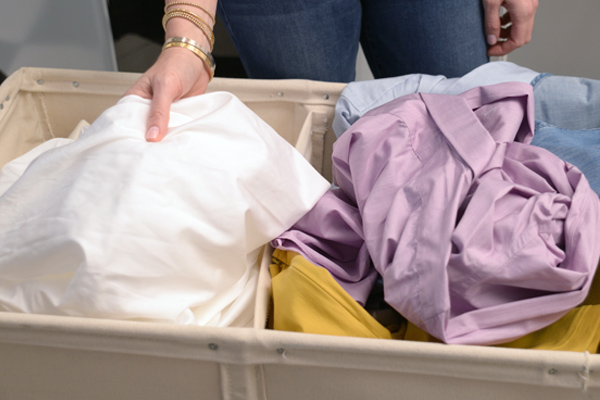
STEP 4: Color Code Then, for best results and maximum color longevity, separate each pile into three smaller piles: white or light clothes, dark clothes, and colors. For patterned items (such as stripes, plaids, polka dots, and florals), sort based on the dominant color. If no single color is dominant, take your pick of piles or launder separately. After sorting, wash each smaller pile separately. Why should I wash denim or activewear separately? Are there any items I can combine to streamline washing? Well, in an ideal world, separating fabrics into the groups detailed in Step 3 helps to protect fabrics, prevent dye bleeding, lint transfer, and achieve the most efficient clean. That being said, most durable fabrics in similar colors can be combined in a pinch, or if you only have a small amount of items to wash. Durable fabrics are those made of cottons, linens, and hardy synthetics designed to withstand a lot of wash and wear. Signature Detergent is perfectly suited for laundering these types of everyday fabrics. Keep in mind that when combining items like workout clothes with fluffy fabrics like towels, you may experience lint transfer, so it’s best to preserve items in a Mesh Bag.
STEP 5: Pretreat Stained Items Pretreating stains and odors before laundering your sorted laundry is one of the best ways to keep fabrics looking fresh and new for longer. Use the Stain Solution to pretreat all stains including makeup, ink, tomato sauce, salad dressing and grass stains. This solution is also effective for old, set-in stains that may appear on collars and cuffs.
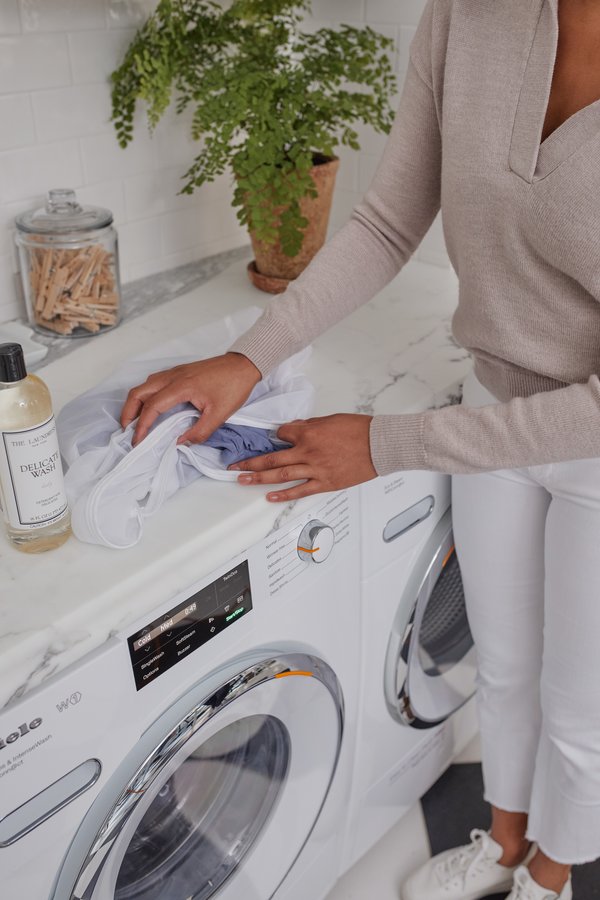
STEP 6: Bag It Protect delicates, woolens, performance fabrics, and denim by turning them inside out and placing them in a Mesh Bag prevent snagging, tearing, and tangling, and provide a layer of protection between delicate items and other fabrics. In a load of mixed colors or patterns, they can also be useful for preventing darker colored items from accumulating “fluff” or lint from lighter colored items. These handy bags are also great for preventing small items (such as socks) from getting lost in the wash.

STEP 7: Launder Wash each pile according to fabric type. If you are unsure of how to best clean a fabric, you may look it up in our Clean Talk Blog to quickly learn the best and safest way to care for it, step by step. Everyday fabrics like cotton, linen, and durable synthetics are the most straightforward fabrics to launder. White clothes and light clothes in everyday fabrics can be washed in warm to hot water on a normal cycle with Signature Detergent. Dark clothes and rich colors in everyday fabrics can benefit from the color-saving properties of cool to warm water temperature, but can typically still be laundered on a normal washing cycle using Signature Detergent. Bear in mind that when specifically laundering towels, the best way to keep them soft, fluffy and odor-free is to launder them separately, and to avoid over-using detergent. These absorbent fabrics soak up excess product easily, causing them to feel stiff even after washing, so definitely skip the use of Fabric Conditioner For sensitive, “dry clean” fabrics, take special care. Use our Wool & Cashmere Shampoo formula to clean knits and sweaters made of cashmere, wool, alpaca, merino, and knit blends, and Delicate Wash for other delicate items. Always launder using a cold washing temperature, and protect items using a mesh bag or simply hand wash separately using a tub or basin . STEP 8: Dry Machine drying is typically where we see the most fabric damage occur, so take care to avoid machine drying sensitive fabrics. The high heat and agitation from tumble drying can lead to shrinkage, fading, and weakening of garments. By selecting the right drying temperature (or by simply air drying), you can prevent damage to clothing and keep your favorite items in rotation for longer. Dryers also use up a lot of energy, so air drying is the more eco-conscious choice when feasible! Everyday fabrics like cotton, linen, and durable synthetics can be machine dried on a warm to hot setting. Toss in a set of woolen dryer balls to speed up laundry's dry time, remove static and lint, and fluff up fabrics! Always be sure to check tags before placing an item in the dryer—while most everyday fabrics can tolerate higher temperatures, some have detailing or attachments that can’t take the heat. Synthetic workout clothing should never be machine dried as it breaks down the elastic and can cause pilling—air dry instead to keep your athletic wear around for longer. Delicate fabrics, including wool, cashmere, lace, silk, and dry clean tagged synthetics should never, ever be placed in the dryer. Not sure whether to hang or to lay flat? The general rule of thumb is to go by the weight of the item—heavy fabrics (think knits and sweaters) should be laid flat and floatier fabrics (silk, chiffon, lingerie), can be hung up. Mist wrinkle-prone items like blouses with a wrinkle-releasing spray while damp to achieve a smooth finish.













